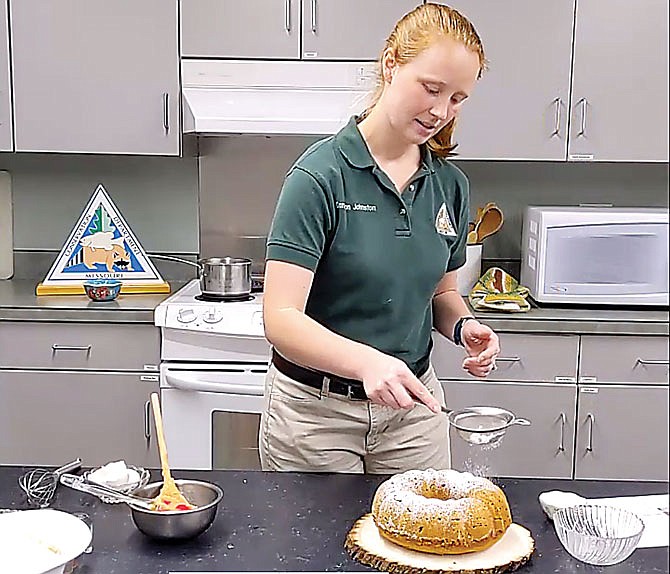When you head out to enjoy nature in Missouri, you might just come across the key ingredient in a new recipe to try.
The Missouri Department of Conservation held a virtual program Wednesday on cooking with wild edibles, sharing two recipes using fruits and nuts native to Missouri - persimmon-black walnut cake and sumac lemonade.
MDC has dozens of recipes that call for native fruit, nuts, greens, wild game and fish at nature.mdc.mo.gov/discover-nature/recipes/all.
"I hope you enjoy these recipes and are able to find other uses for persimmons, black walnuts and sumac," MDC naturalist Cameron Johnston said.
MDC also has recipes for persimmon cookies and fudge and spiced nuts.
Before showing viewers the step by step process of how to bake the cake and make the lemonade, Johnston gave some advice for those interested in searching for edible plants.
"Focus on limiting the impact you're having on the ecosystem you're entering," Johnston said.
This means refrain from littering and if you take edible plants, make sure you leave enough or others and wildlife.
Persimmons are an autumn fruit enjoyed by deer, raccoons and people. Once collected, bakers should remove seeds from persimmon pulp and use a blender or food mill to create a puree. The puree can be baked immediately or frozen for later.
Black walnuts are also in season and have already begun to fall. Green and brown fruits can be collected from the ground. Before being eaten, the nut must be hulled, dried and shelled. Leaving the fruit in the driveway to be run over is one way to get through the thick hull, but hammers can also be used.
The persimmon and walnut cake made by Johnston on camera is thick and dense, similar in texture to pumpkin or zucchini bread.
Other than the native fruit and nut, the ingredients for a similar cake are fairly basic - sugar, spices, oil, eggs and butter.
Sumac lemonade is a much simpler, though exotic, recipe.
Sumac shrubs are known for their red, orange or purplish red foliage. The plant bears clusters of red berries.
During the program, one viewer asked if sumac is poisonous - the plant found in Missouri is not. Another plant, sometimes called poison sumac, does exist, but its berries are white instead of red, and it does not grow in this state.
The lemonade made by Johnston doesn't actually have any lemons in it. The sumac's berry is tart and beverages made from it taste somewhat lemony.
To make sumac lemonade, fill a pitcher with clusters of berries and pour boiling water over it. After allowing the beverage to steep for five minutes, fill the pitcher with cool water and allow it to sit. The recipe isn't exact as the hot to cold water ratio and the time spent steeping can impact the taste and different people have different preferences, Johnston explained.
A cup of sugar can sweeten a gallon of the beverage.
"I'm sure all of the nature center staff is going to enjoy this program," Johnston said after preparing both recipes.

